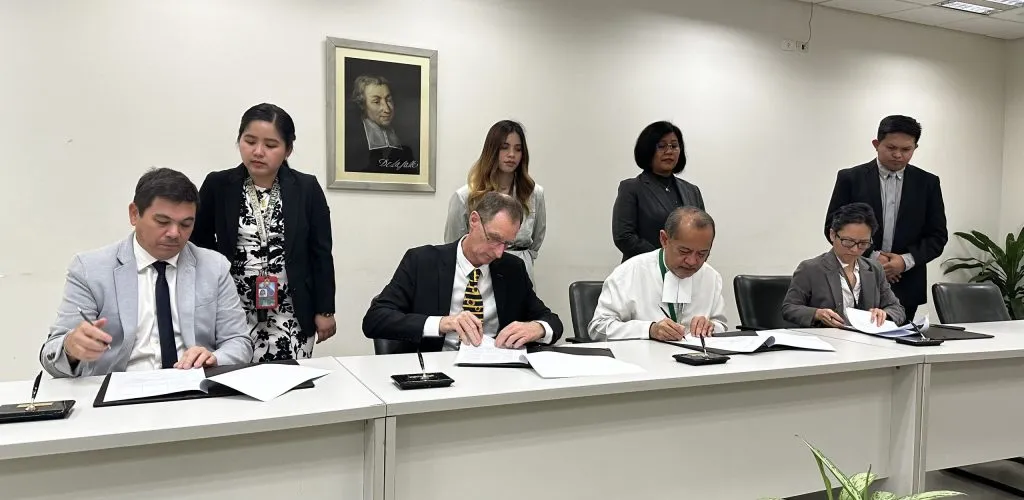Road construction has evolved considerably in recent years and today more options are available, offering greater longevity and durability, lowered costs, faster application and reduced impact on the environment. The fact that more options are available, however, means that more critical decisions must be made in order to ensure that the optimal solution is selected for the specific needs of each project. In this article we will look at some of the variables that should be considered, while examining the va
April 23, 2013
Read time: 6 mins
Road construction has evolved considerably in recent years and today more options are available, offering greater longevity and durability, lowered costs, faster application and reduced impact on the environment. The fact that more options are available, however, means that more critical decisions must be made in order to ensure that the optimal solution is selected for the specific needs of each project. In this article we will look at some of the variables that should be considered, while examining the various solutions available in the market.
Knowing your resources
Begin with a forensic investigation of the existing road pavement structure and determine the cause of its failure. This investigation includes on-site sampling and lab testing of the existing materials within the pavement structure, of those within the sub-grade layers, and of locally available materials from around the road. Based on these tests, the following determinations can be made: (1) are the existing materials suitable for recycling into the new road pavement structure after being upgraded to the required standard?; (2) are there readily-available materials next to the road that could be incorporated as part of the road structure?; and, (3) what would be the optimal method of upgrading all of these materials to the necessary standard for them to be used as material for the new pavement layer? The usual method of upgrading such materials is through stabilization.
Traditional stabilizers and their reactions
The most common stabilizing materials, and those which have been in use the longest, are hydraulic in nature. Typically these will be cement or lime or a mixture based on them. The two stabilizers have very distinct reaction processes when applied to different soils and materials. Cement is mainly used to stabilize granular and sandy materials, which do not have cohesive properties. Adding water to the mix, the cement reacts by forming a “cementitious gel”, which binds the particles, creating a hardened layer.
Lime on the other hand is mainly used to stabilize expansive soils, such as clays. When water is added the lime and soil particles react and an ion exchange process takes place. This reaction neutralizes the swelling effect of the clay particles. Lime is mainly used to stabilize natural soils in sub-grade layers, while cement is mainly used to improve the characteristics of materials within the road pavement structure.
Understanding that there are variations along the route
It must be remembered that roads often pass through a variety of terrains, each with a variety of characteristics. Similarly, the characteristics of the road itself can vary widely, due to inconsistent construction, or due to consistent construction despite variations in the terrain. As a consequence, in recent years, specific mixes of hydraulic products, such as AnyWay’s Natural Soil Stabilizer (ANSS), have been developed with the aim of expanding the range of soils and other materials that can be stabilized with lime and cement. This enables the use of a single product to treat materials varying from clay to sand, while still achieving the road’s design specifications.
ANSS offers five main reaction processes in one product:
•Ionic exchange with clay particles
•Crystalline formation between soil particles
•Cementitious gel creation
•Continuation of cementitious gel phase over an extended period; and
•Physical stabilization by fiber net
Using products such as ANSS will reduce: (1) the time required to construct a road; (2) the direct costs of construction as well as the maintenance costs over the lifespan of the road; and (3) the environmental impact of the project in virtually all relevant aspects. This is the optimal result: a road constructed in the most expeditious, economical and environmentally-friendly manner possible.
Building a new road or upgrading an existing one
In some cases a completely new road is being built on virgin terrain. In other cases, which are increasingly common today, there is an existing road, but this road is either damaged (e.g. many pot holes), or is no longer suitable for the required purposes (e.g. load capacity is too low resulting in pavement deflections; its width is too narrow, etc.). There are three main factors influencing the decision: (1) time; (2) costs of construction and maintenance; and (3) environmental impact. The best option would be one that minimizes them all.Should you recycle the existing road?
In the past, upgrading a road meant re-building the existing one, cutting and dumping the existing pavement materials and importing other materials for the new road pavement structure.. The negative impact of this method on the environment is clear. Existing resources are wasted and some of which pose a threat to the environment in which they are discarded. These days, with increased environmental awareness, dumping used road building material is often not allowed by regulators and in those cases where it is allowed, regulatory compliance and trucking costs make it a very expensive option. Recycling the existing road materials is undoubtedly an environmentally friendlier approach , and one must also consider how much more economical this approach can be, over both the short term and long term, taking into consideration both the initial construction costs and the anticipated maintenance costs over the lifespan of the designed road.Recycling requires expertise
The answers to the above questions are not trivial. Since recycling means in most cases using the existing pavement materials and upgrading their mechanical engineering properties to meet specifically designed requirements, the process requires knowledge and expertise. The aim of this process is to minimize: (1) up-front and long term costs (both construction costs and material costs); (2) the time required to complete the construction work; and (3) the impact of the project upon the local environment. Experience is crucial to the success of road pavement structure recycling projects. The know-how, knowledge and experience gained from regularly dealing with the variations involved in such projects greatly enhances one’s ability to determine the optimal solution for a given road.Knowing your resources
Begin with a forensic investigation of the existing road pavement structure and determine the cause of its failure. This investigation includes on-site sampling and lab testing of the existing materials within the pavement structure, of those within the sub-grade layers, and of locally available materials from around the road. Based on these tests, the following determinations can be made: (1) are the existing materials suitable for recycling into the new road pavement structure after being upgraded to the required standard?; (2) are there readily-available materials next to the road that could be incorporated as part of the road structure?; and, (3) what would be the optimal method of upgrading all of these materials to the necessary standard for them to be used as material for the new pavement layer? The usual method of upgrading such materials is through stabilization. Traditional stabilizers and their reactions
The most common stabilizing materials, and those which have been in use the longest, are hydraulic in nature. Typically these will be cement or lime or a mixture based on them. The two stabilizers have very distinct reaction processes when applied to different soils and materials. Cement is mainly used to stabilize granular and sandy materials, which do not have cohesive properties. Adding water to the mix, the cement reacts by forming a “cementitious gel”, which binds the particles, creating a hardened layer. Lime on the other hand is mainly used to stabilize expansive soils, such as clays. When water is added the lime and soil particles react and an ion exchange process takes place. This reaction neutralizes the swelling effect of the clay particles. Lime is mainly used to stabilize natural soils in sub-grade layers, while cement is mainly used to improve the characteristics of materials within the road pavement structure.
Understanding that there are variations along the route
It must be remembered that roads often pass through a variety of terrains, each with a variety of characteristics. Similarly, the characteristics of the road itself can vary widely, due to inconsistent construction, or due to consistent construction despite variations in the terrain. As a consequence, in recent years, specific mixes of hydraulic products, such as AnyWay’s Natural Soil Stabilizer (ANSS), have been developed with the aim of expanding the range of soils and other materials that can be stabilized with lime and cement. This enables the use of a single product to treat materials varying from clay to sand, while still achieving the road’s design specifications. Lack of optimization along the route – one of the main reasons for project failure
One of the most common mistakes made in road construction projects is that of using the same methods and materials throughout the route, despite soil variations. Along the road there may be segments that are characterized by mostly granular materials, while other segments may be more silty or clayey. Since changing the solutions and application methods for the various segments of a single road construction project is complex and costly, the preferred method of dealing with these challenges would be to use a single method and a single stabilization technology capable of addressing all of the various materials involved. This is in contrast to discarding the existing materials and replacing them with imported material that is specifically optimized for the site or, using a single solution and application method along the entire length of the road, with the result that some segments are sub-optimal. These segments will eventually fail, causing discomfort for the road’s users, and the road will require considerably more maintenance. Any cost savings generated by this latter approach during the construction phase are soon lost to the higher maintenance costs and reduced lifespan of the road.ANSS, a flexible solution that saves overall costs
One solution to the challenge of variations along the route is to use a new-generation stabilizer called ANSS. ANSS combines the advantages of cement and the advantages of lime in a single product, while eliminating the negative effects of each of these substances. Composed of a specific type of cement, lime, several pozzolans, reaction rate governing additives and a unique polypropylene fiber, ANSS facilitates the independent contribution of each component to the reaction process, while acting together in a holistic manner.ANSS offers five main reaction processes in one product:
•Ionic exchange with clay particles
•Crystalline formation between soil particles
•Cementitious gel creation
•Continuation of cementitious gel phase over an extended period; and
•Physical stabilization by fiber net
Using products such as ANSS will reduce: (1) the time required to construct a road; (2) the direct costs of construction as well as the maintenance costs over the lifespan of the road; and (3) the environmental impact of the project in virtually all relevant aspects. This is the optimal result: a road constructed in the most expeditious, economical and environmentally-friendly manner possible.









